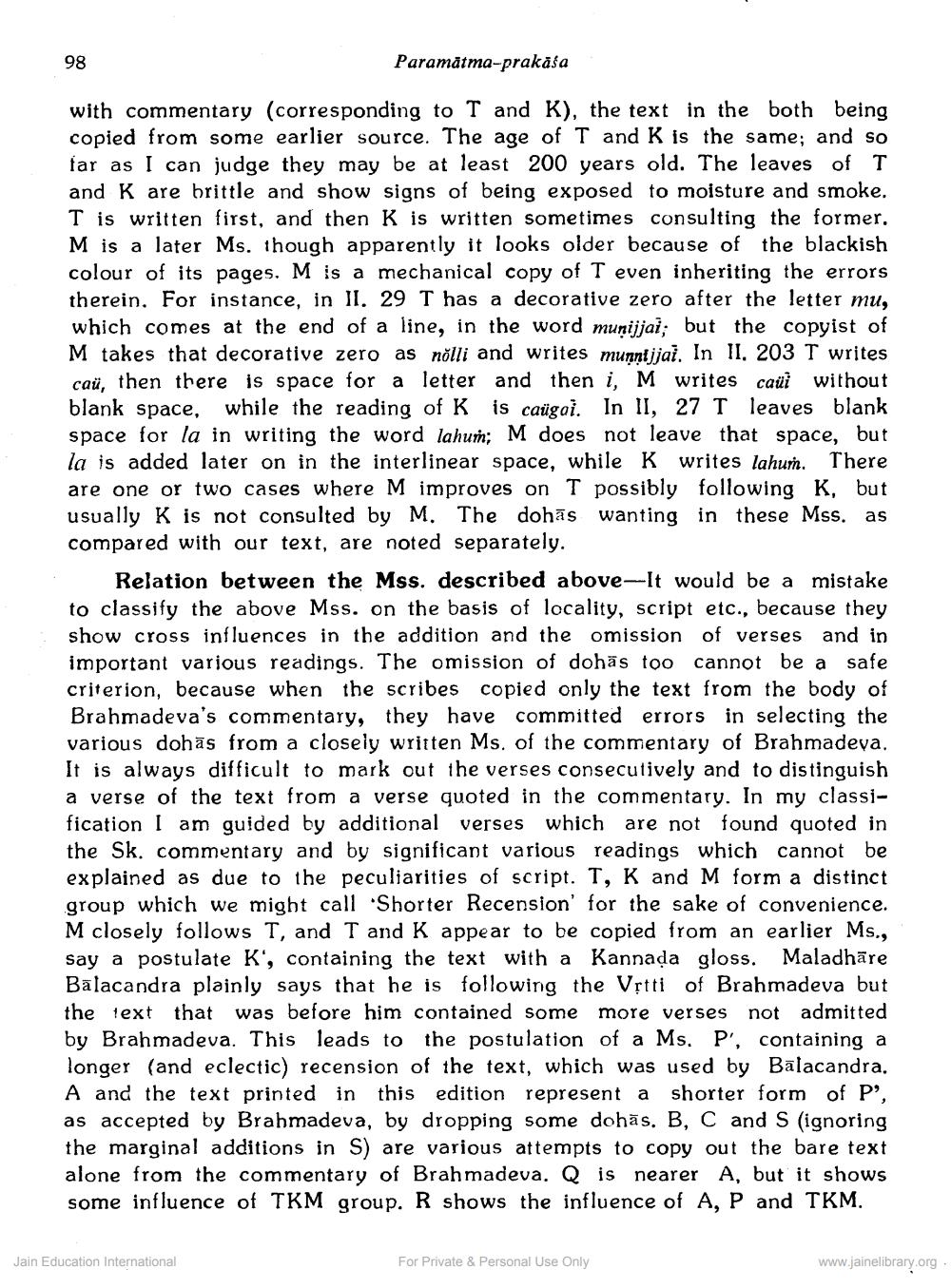________________
98
Paramātma-prakāśa
with commentary (corresponding to T and K), the text in the both being copied from some earlier source. The age of T and K is the same; and so far as I can judge they may be at least 200 years old. The leaves of T and K are brittle and show signs of being exposed to moisture and smoke. T is written first, and then K is written sometimes consulting the former. Mis a later Ms. though apparently it looks older because of the blackish colour of its pages. M is a mechanical copy of T even inheriting the errors therein. For instance, in II. 29 T has a decorative zero after the letter mu, which comes at the end of a line, in the word munijjai; but the copyist of M takes that decorative zero as nõlli and writes munntjjai. In II. 203 T writes caü, then there is space for a letter and then i, M writes caüi without blank space, while the reading of K is caügai. In II, 27 T leaves blank space for la in writing the word lahun; M does not leave that space, but la is added later on in the interlinear space, while K writes lahun. There are one or two cases where M improves on T possibly following K, but usually K is not consulted by M. The dohās wanting in these Mss. as compared with our text, are noted separately.
Relation between the Mss. described above-It would be a mistake to classify the above Mss. on the basis of locality, script etc., because they show cross influences in the addition and the omission of verses and in important various readings. The omission of dohās too cannot be a safe criterion, because when the scribes copied only the text from the body of Brahmadeva's commentary, they have committed errors in selecting the various dohās from a closely written Ms. of the commentary of Brahmadeya. It is always difficult to mark out the verses consecutively and to distinguish a verse of the text from a verse quoted in the commentary. In my classification I am guided by additional verses which are not found quoted in the Sk. commentary and by significant various readings which cannot be explained as due to the peculiarities of script. T, K and M form a distinct group which we might call Shorter Recension for the sake of convenience. M closely follows T, and T and K appear to be copied from an earlier Ms., say a postulate K, containing the text with a Kannada gloss. Maladhāre Bālacandra plainly says that he is following the Vștti of Brahmadeva but the text that was before him contained some more verses not admitted by Brahmadeva. This leads to the postulation of a Ms. P', containing a longer (and eclectic) recension of the text, which was used by Bālacandra. A and the text printed in this edition represent a shorter form of P' as accepted by Brahmadeva, by dropping some dohās. B, C and S (ignoring the marginal additions in S) are various attempts to copy out the bare text alone from the commentary of Brahmadeva. Q is nearer A, but it shows some influence of TKM group. R shows the influence of AP and TKM.
Jain Education International
For Private & Personal Use Only
www.jainelibrary.org




